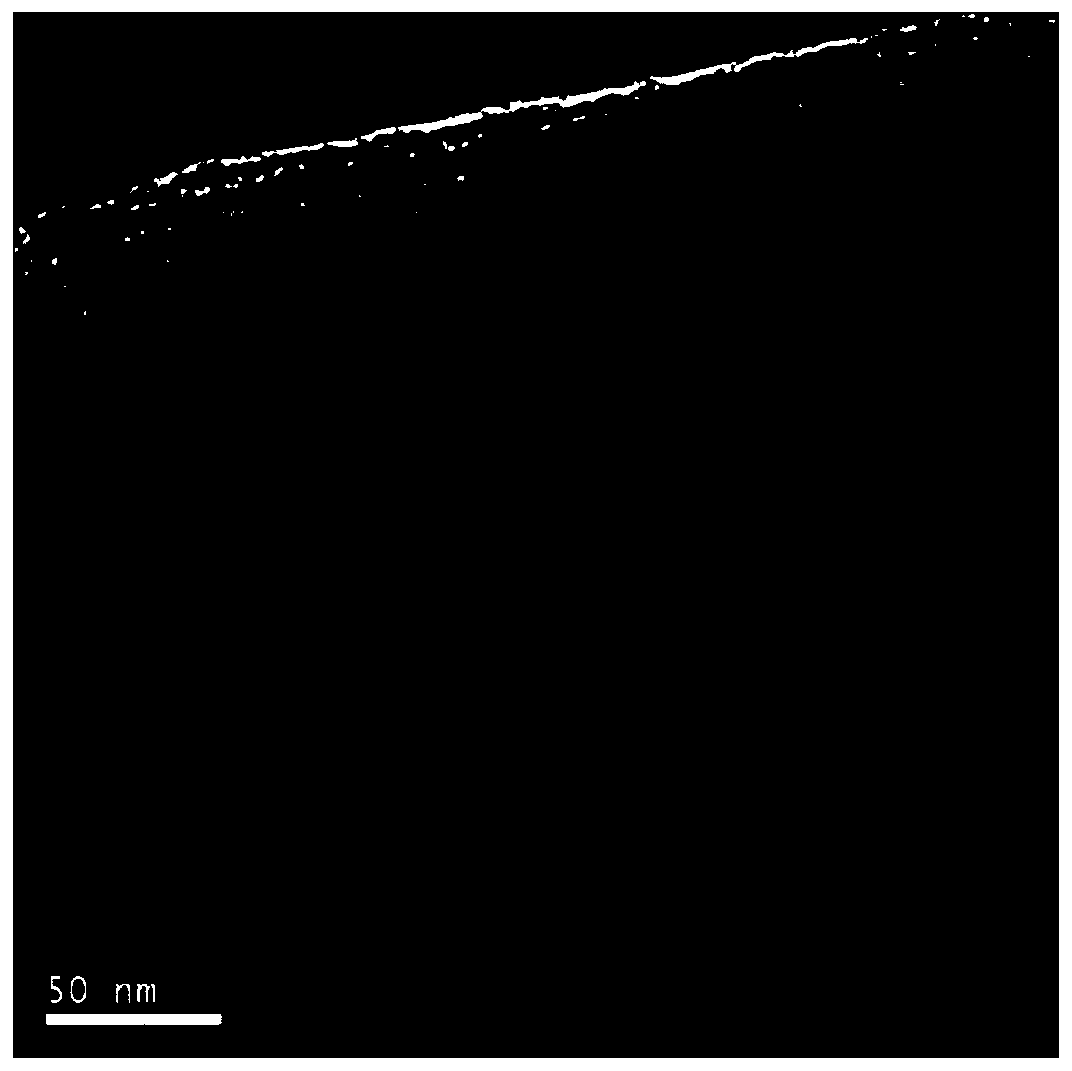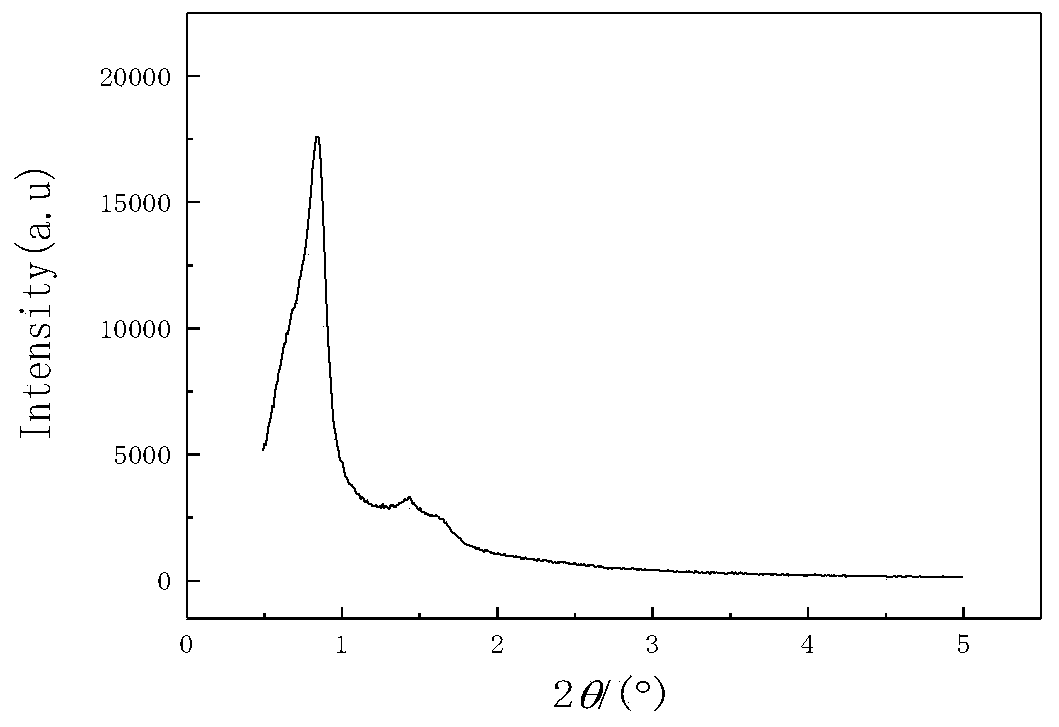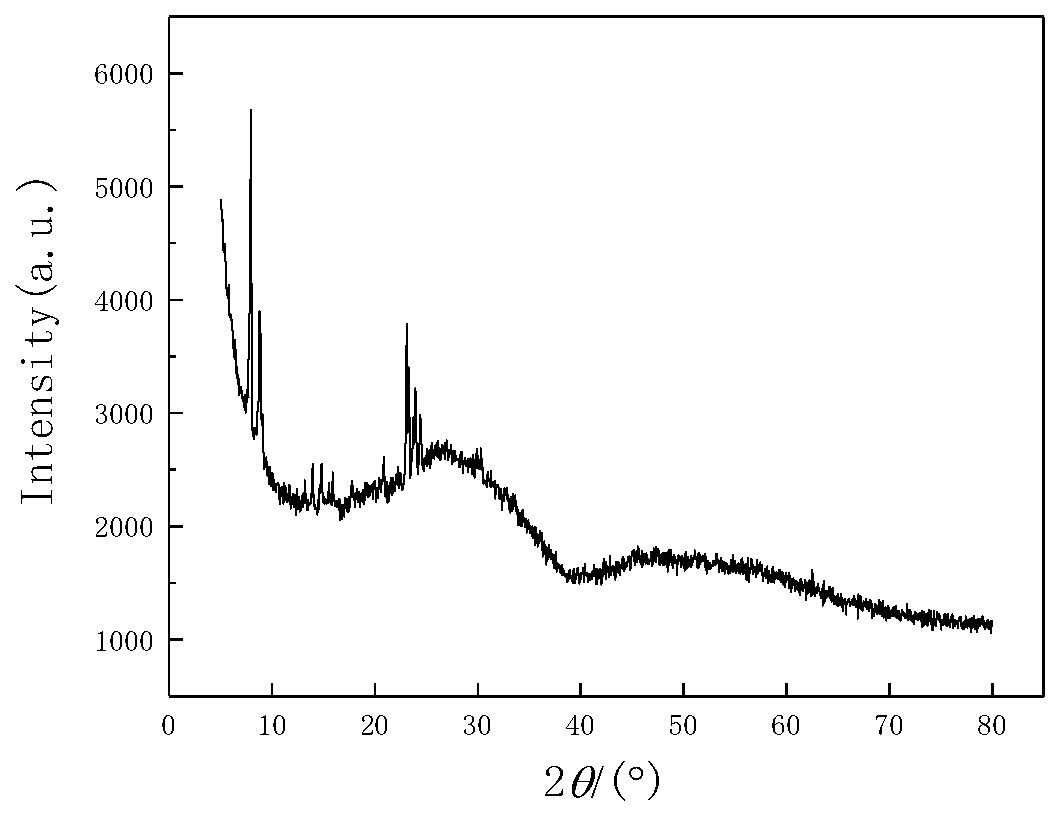Method for refining aromatic hydrocarbons by using microporous-mesoporous core-shell structure composite molecular sieve
A composite molecular sieve and core-shell structure technology, applied in the field of aromatics refining, can solve the problems of catalyst deactivation, catalyst pore blockage, etc., achieve the effect of optimizing reaction conditions, improving activity and activity stability
- Summary
- Abstract
- Description
- Claims
- Application Information
AI Technical Summary
Problems solved by technology
Method used
Image
Examples
Embodiment 1
[0045] Example 1: Preparation of ZrPO / HZSM-5 core-shell structure composite molecular sieve catalyst
[0046] (1) Synthesis of ZrPO / HZSM-5 core-shell structure composite molecular sieve powder with HZSM-5 microporous molecular sieve as the core and ZrPO mesoporous molecular sieve as the shell
[0047] According to the solid-to-liquid mass ratio of 1:10, 2.0g of inner core HZSM-5 microporous molecular sieve powder and triblock copolymer FI27(EO 106 PO 70 EO 106 ) ethanol solution was stirred and mixed, and stirred continuously at 30° C. for 10 h to obtain mixture A. According to the P to Zr molar ratio n P / n Zr =0.8, F127 and P+Zr molar ratio n F127 / (n P +n Zr )=0.014 ratio, dissolve 57.6g (4.57mmol) F127 with 600mL absolute ethanol, stir at 40°C for 30min to obtain F127 ethanol solution; dissolve 58.0g (180.0mmol) zirconium oxychloride with 300mL absolute ethanol , stirred at 40°C for 30min to obtain ethanol solution of zirconium oxychloride; then dissolved 20.2g (1...
Embodiment 2
[0050] Example 2: Al 0.25 Zr 0.75 Preparation of PO / Hβ core-shell structure composite molecular sieve catalyst
[0051] (1)Al 0.25 Zr 0.75 Synthesis of Composite Molecular Sieves with PO / Hβ Core-Shell Structure
[0052] According to the solid-to-liquid mass ratio of 1:30, 5.0 g of inner core microporous Hβ molecular sieve powder was stirred and mixed with 3.0% FI27 ethanol solution, and stirred continuously at 40°C for 6 hours to obtain mixture A. According to P to total metal molar ratio n P / (n Zr +n Al )=0.75, F127 and P+Zr+Al molar ratio n F127 / (n P +n Zr +n Al )=0.016 ratio, 63.0g (5.0mmol) of F127 was dissolved in 600mL of absolute ethanol, stirred at 30°C for 60min to obtain F127 ethanol solution; 43.5g (135.0mmol) of zirconium oxychloride was dissolved in 300mL of absolute ethanol , stirred at a temperature of 30°C for 60min to obtain an ethanol solution of zirconium oxychloride; dissolved 6.0g (45.0mmol) of anhydrous aluminum chloride in 150mL of absolute et...
Embodiment 3
[0055] Example 3: Ca 0.05 Zr 0.95 Preparation of PO / HY core-shell structure composite molecular sieve catalyst
[0056] (1)Ca 0.05 Zr 0.95 Synthesis of PO / HY core-shell composite molecular sieves
[0057] According to the solid-to-liquid mass ratio of 1:50, 10.0 g of inner microporous HY molecular sieve powder and 5.0% mass concentration of FI27 ethanol solution were stirred and mixed, and stirred continuously at 50° C. for 2 hours to obtain mixture A. According to P to metal molar ratio n P / (n Zr +n Ca )=0.95, F127 and P+Zr+Ca molar ratio n F127 / (n P +n Zr +n Ca )=0.036 ratio, 126.0g (10.0mmol) of F127 was dissolved in 800mL of absolute ethanol, stirred at 40°C for 30min to obtain F127 ethanol solution; 43.5g (135.0mmol) of zirconium oxychloride was dissolved in 300mL of absolute ethanol , stirred at a temperature of 40°C for 30min to obtain an ethanol solution of zirconium oxychloride; dissolved 0.79g (7.1mmol) of anhydrous calcium chloride in 100mL of absolute ...
PUM
| Property | Measurement | Unit |
|---|---|---|
| molar mass | aaaaa | aaaaa |
Abstract
Description
Claims
Application Information
 Login to View More
Login to View More - R&D
- Intellectual Property
- Life Sciences
- Materials
- Tech Scout
- Unparalleled Data Quality
- Higher Quality Content
- 60% Fewer Hallucinations
Browse by: Latest US Patents, China's latest patents, Technical Efficacy Thesaurus, Application Domain, Technology Topic, Popular Technical Reports.
© 2025 PatSnap. All rights reserved.Legal|Privacy policy|Modern Slavery Act Transparency Statement|Sitemap|About US| Contact US: help@patsnap.com



